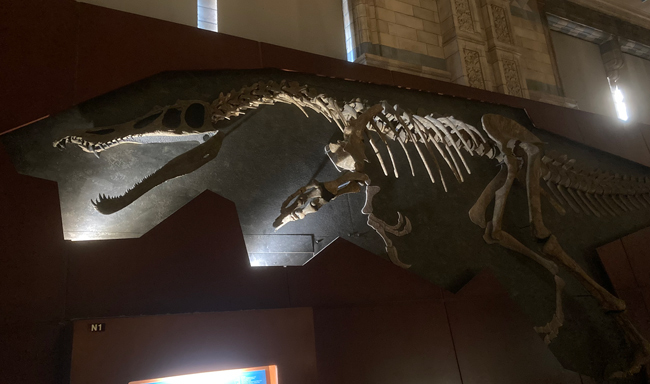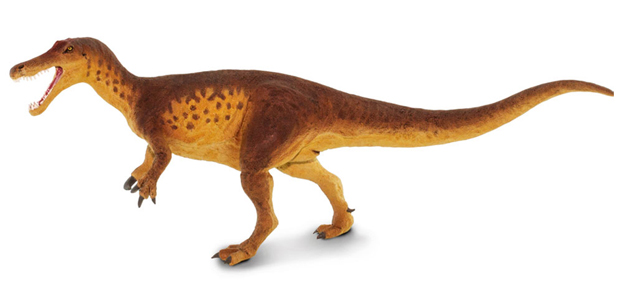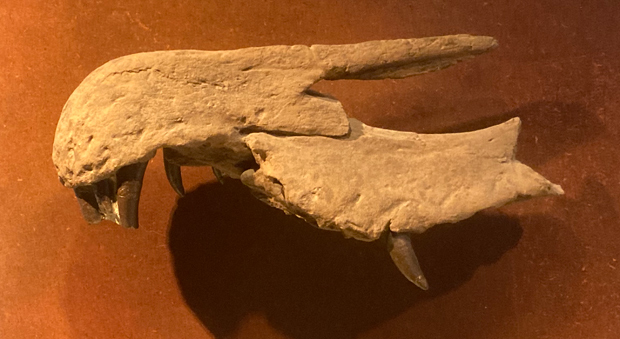The Fascinating London Natural History Museum Baryonyx Exhibit
Everything Dinosaur team members took some photographs of the London Natural History Museum Baryonyx exhibit during a visit to the Museum in the summer. The first skeletal remains of this iconic theropod were discovered forty years ago. This dinosaur was formally named and described in 1986 (Baryonyx walkeri).

Picture credit: Everything Dinosaur
A Museum Baryonyx Exhibit
Baryonyx was named by British palaeontologists Alan J. Charig and Angela Milner, based on about 70 percent of the skeleton. The holotype was originally known as BMNH R9951, however, it was later re-catalogued as NHMUK VP R9951. It remains one of the most complete theropod fossil skeletons known from the British Isles. It is also one of the most complete examples of a spinosaurid known to science.
The museum Baryonyx exhibit (pictured above), is not made up of the actual fossil bones. Instead, the mounted skeleton is made up of casts and reconstructed skeletal material.

Numerous Baryonyx replicas have been produced. It remains a popular theropod dinosaur. The image (above) shows the 2021 Wild Safari Prehistoric World Baryonyx figure.
To view this model range: Wild Safari Prehistoric World Models and Figures.
The Baryonyx Jaw
The London Natural History Museum display also includes several Baryonyx fossil casts. These exhibits highlight important characteristics of the fossil skeleton. Team members at Everything Dinosaur took the opportunity to admire the cast of the premaxilla and a partial maxilla on display.

Picture credit: Everything Dinosaur
A spokesperson from Everything Dinosaur commented that Baryonyx walkeri was one of their favourite British theropod dinosaurs. Although, they did concede that fossil specimens from elsewhere in the world had been assigned to this genus.
Visit the award-winning Everything Dinosaur website: Visit the Everything Dinosaur Website.

